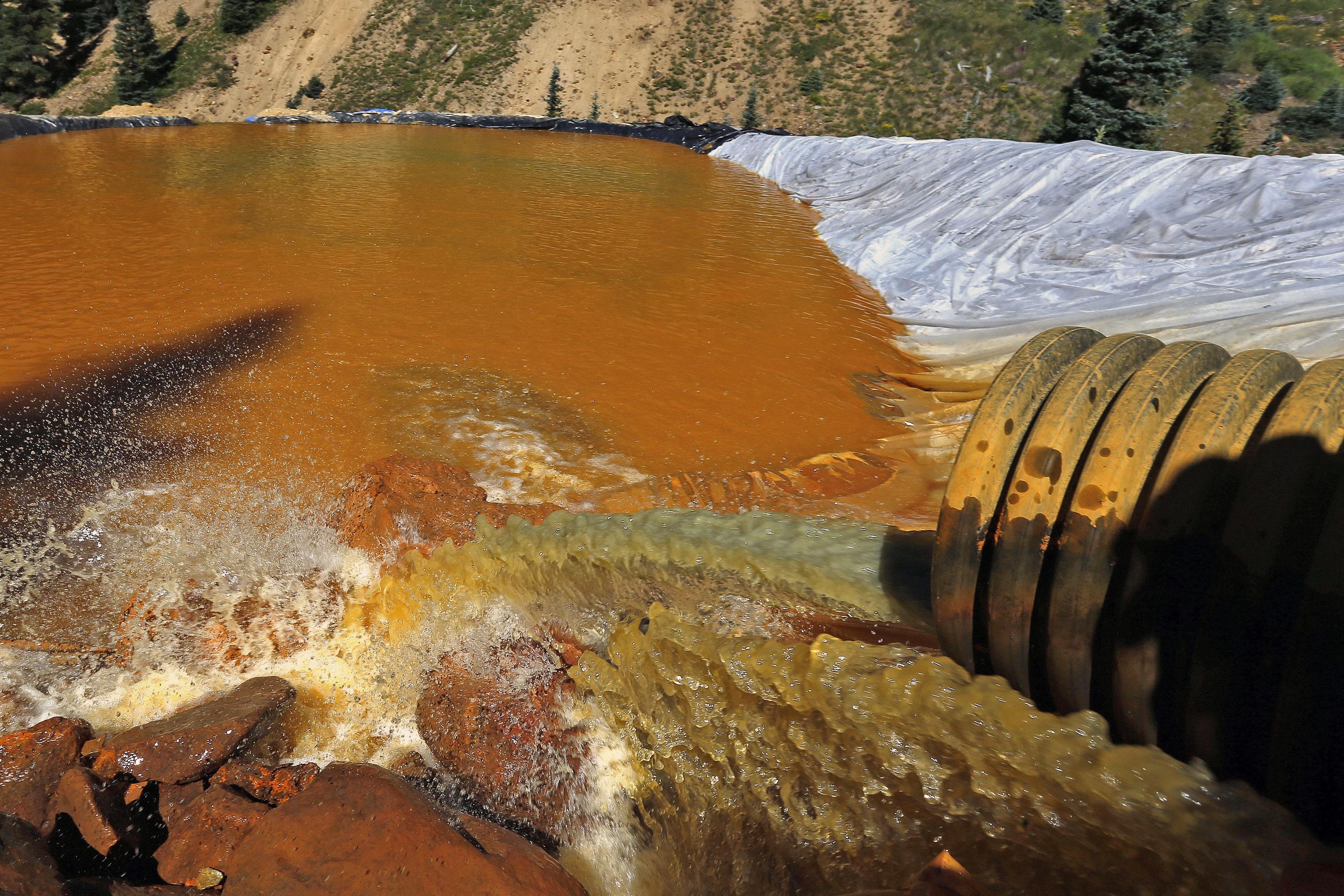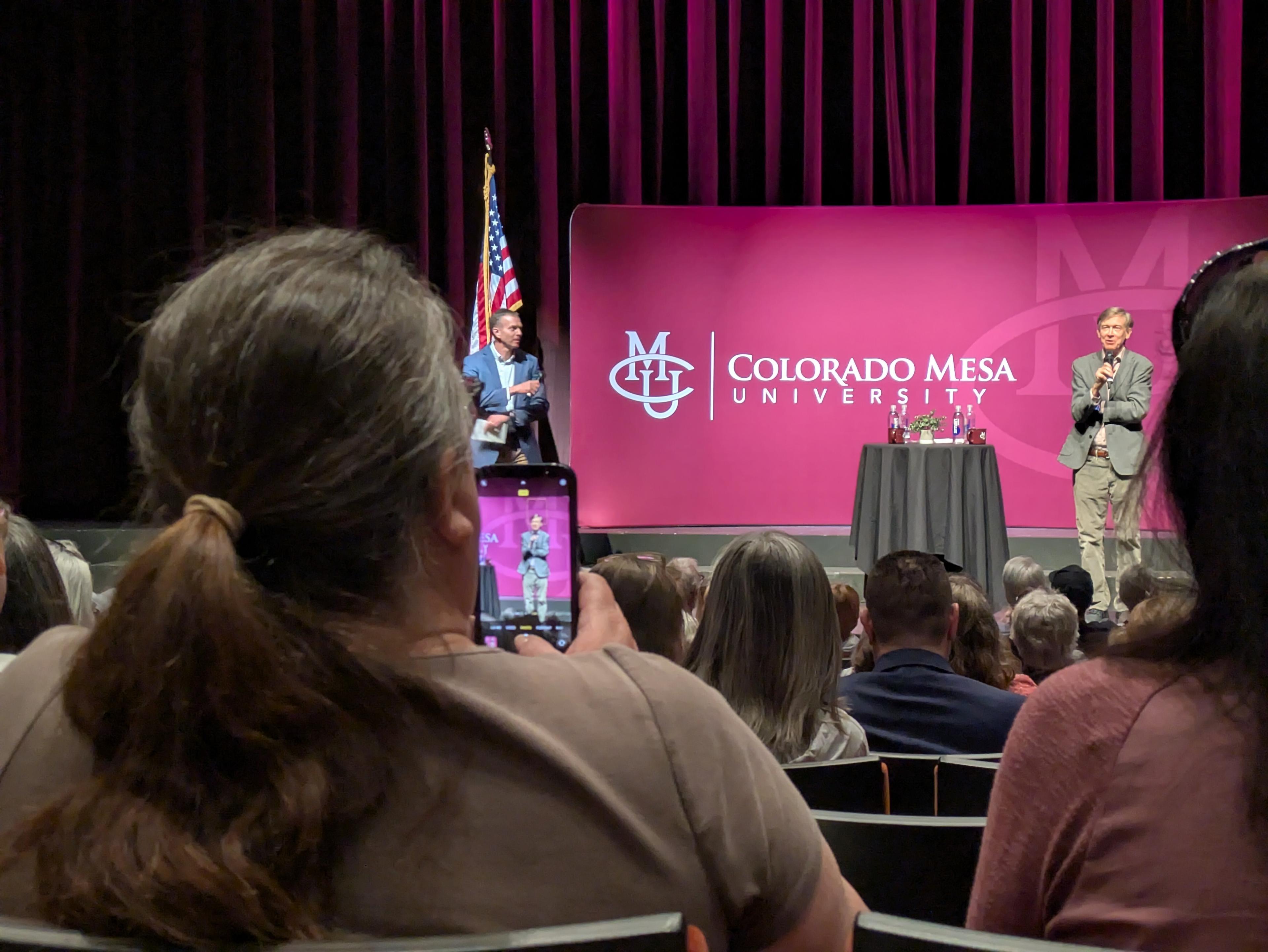
Updated: 10 a.m., July 22, 2019.
In August 2015, the Gold King Mine blew out.
When it did, more than 3 million gallons of orange wastewater spilled into the Animas River in southern Colorado.
The accident occurred at an inactive mine where polluted water had been accumulating for years before an Environmental Protection Agency crew accidentally released it during cleanup work.
The EPA declared the mine, and 47 others near it, a superfund site. Since then, the agency has been waging fights over who is going to clean up the site — and who is responsible.
The water from the superfund site has led to environmental hazards that some say have severely hurt fish and wildlife populations in the river.
Sunnyside Gold Corp. has spent millions of dollars trying to clean up the site. This month, it told the EPA it won’t carry out the cleanup work ordered by the agency.
Jonathan Thompson is the author of a book on the disaster. Here's what he said you need to know about the mine.
This interview has been edited for clarity.
What's the latest?
The EPA recently ordered the Sunnyside Gold Corp. to do some drilling work to investigate where the water originates to help with cleanup. But just a few days ago, Sunnyside Gold sent a letter to the EPA essentially saying, "No, we're not going to do it."
What's their rationale for refusing?
Back in 1992 when Sunnyside Gold Corp. closed their mine and started cleaning up, the company came to an agreement with Colorado that they would plug the mine and do a certain amount of cleanup.
Sunnyside Gold also agreed to clean up unrelated, neighboring mines to offset the pollution in the river. In a way, they were like pollution credits.
The company spent well over $20 million on clean-up. Now they're basically saying, "Look, we came to this agreement with the state — the EPA signed off on the agreement — and we did everything that we were supposed to do."
(The EPA wrote in an email that they did not approve any such agreement between Sunnyside and the State of Colorado and were not a party to it.)
So what's the next step?
We'll it's going to be another court battle, likely. So far, it has been the subject of a number of ongoing lawsuits. This is just going to add to that legal quagmire. In the meantime, it's just going to delay progress on the superfund cleanup.
Do you foresee the cleanup will eventually finish?
It will take place, it's going to take a long time. And that's not totally surprising. Superfund designations tend to be very long, drawn out processes. Don't expect them to wrap up the cleanup any time in the next 10 years, maybe not the next 20.
What are the detrimental effects to the environment?
Mostly it's to aquatic life: bugs and fish. It's bad for them. We've seen that dramatically on the Animas River, where the mine spilled into. The number of species of fish downstream for maybe 40 miles downstream has declined.
(The EPA says studies it has conducted have found no environmental ill effects from the Gold King Mine leak. They say "discharges from the mine have been treated to remove metals since the August 2015 Gold King Mine release."
They add their ongoing investigations are focused on the environmental hazards associated with all 48 source areas at the superfund site.)
Are people threatened by these kinds of spills?
Not necessarily. People were certainly affected because they had to close the river and they had to shut off irrigation ditches. And it was also emotionally and psychologically traumatic for people, to see the river turn that color. As far as health effects go, there wasn't enough lead or mercury in the spilled water to really affect human health, and many wastewater treatment facilities downstream are able to clean these things out.
This story has been corrected to reflect what mine Sunnyside Gold Corp. owns and updated to include comment from the EPA.









